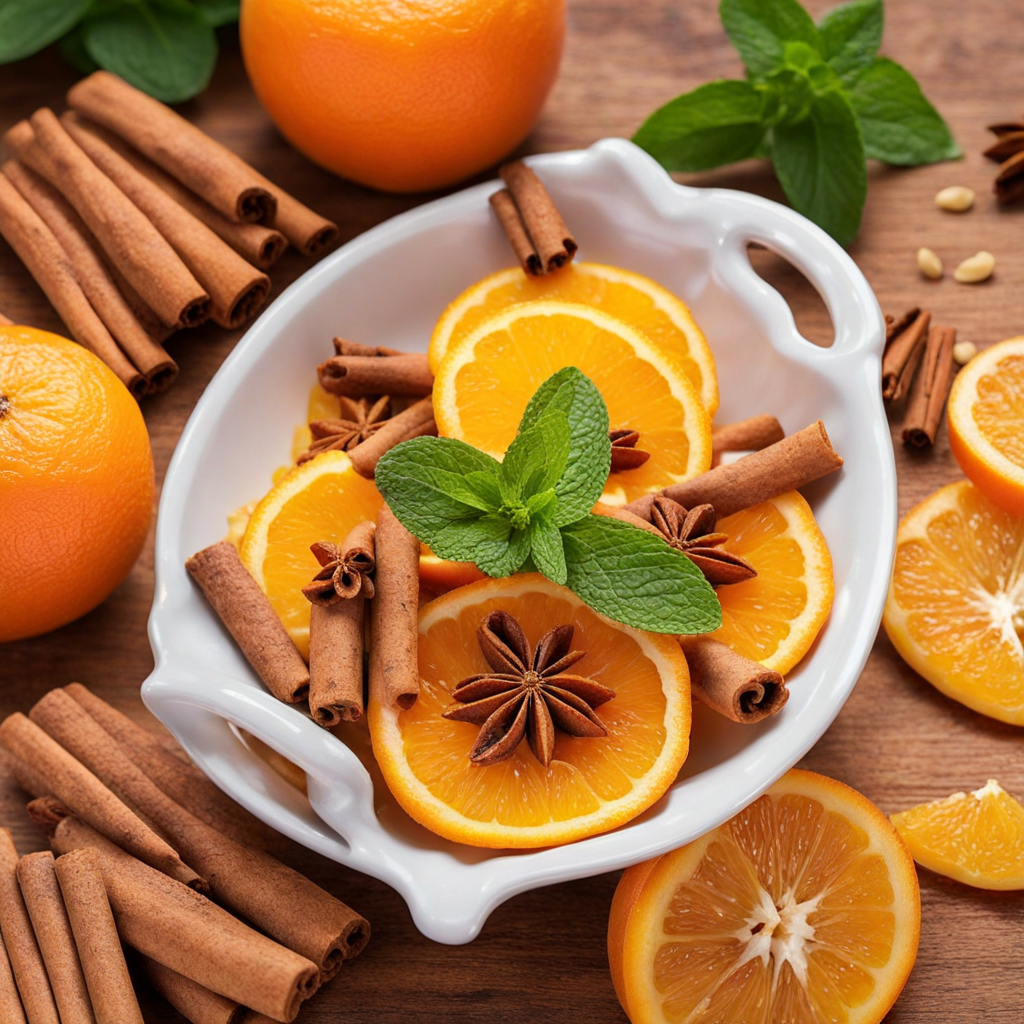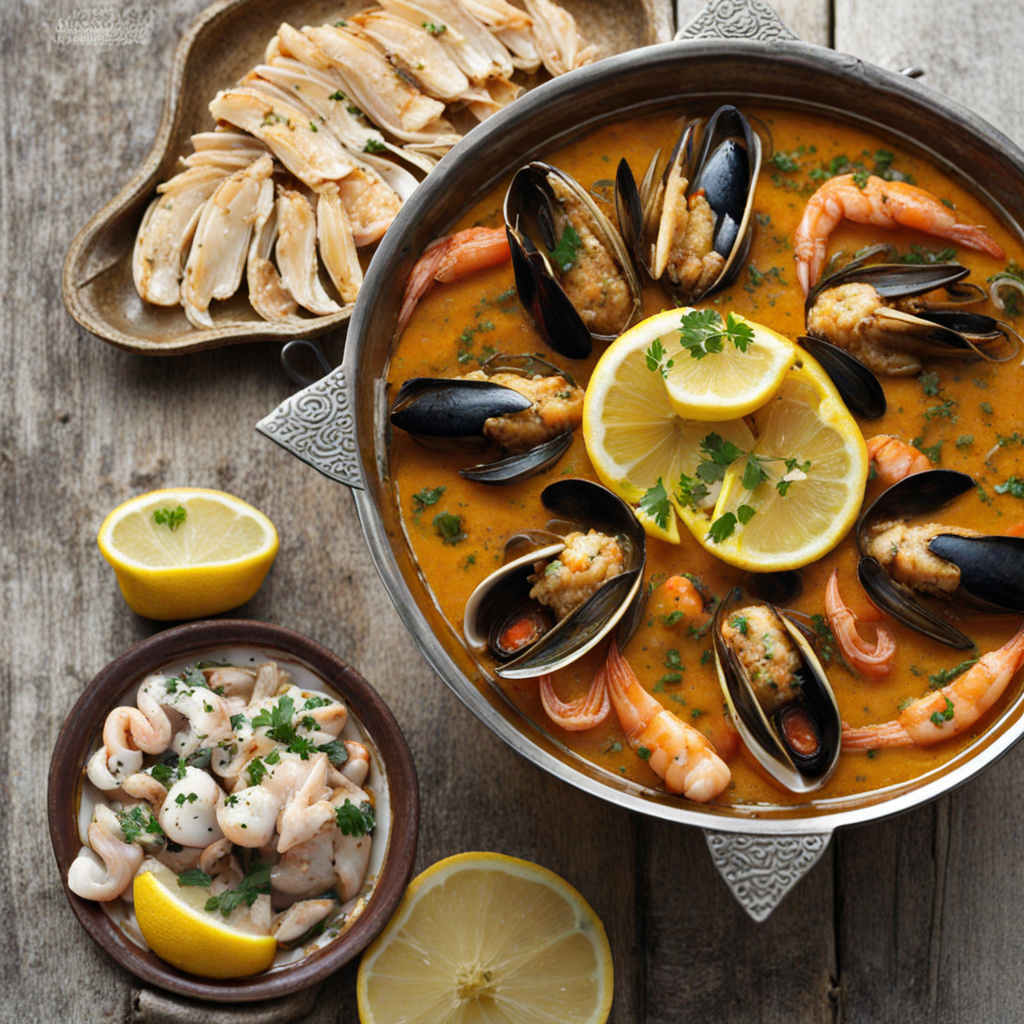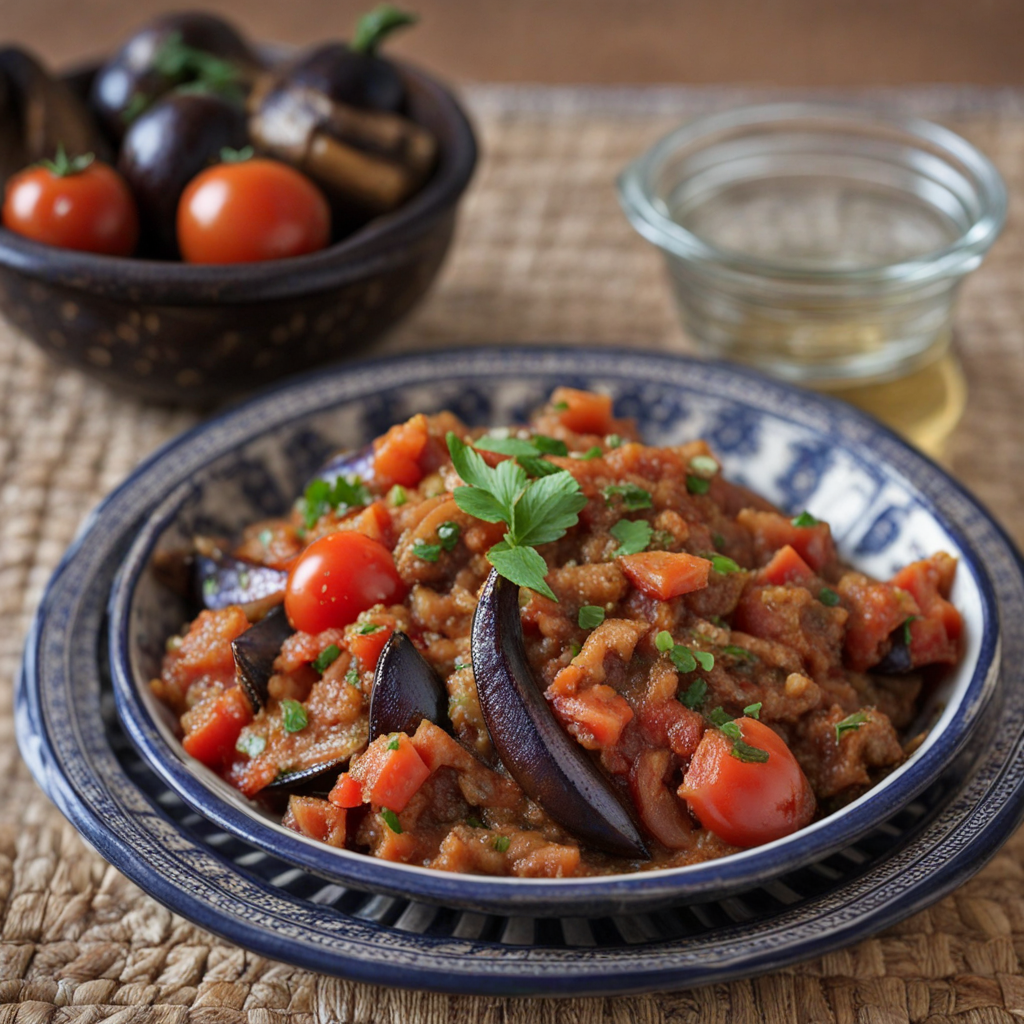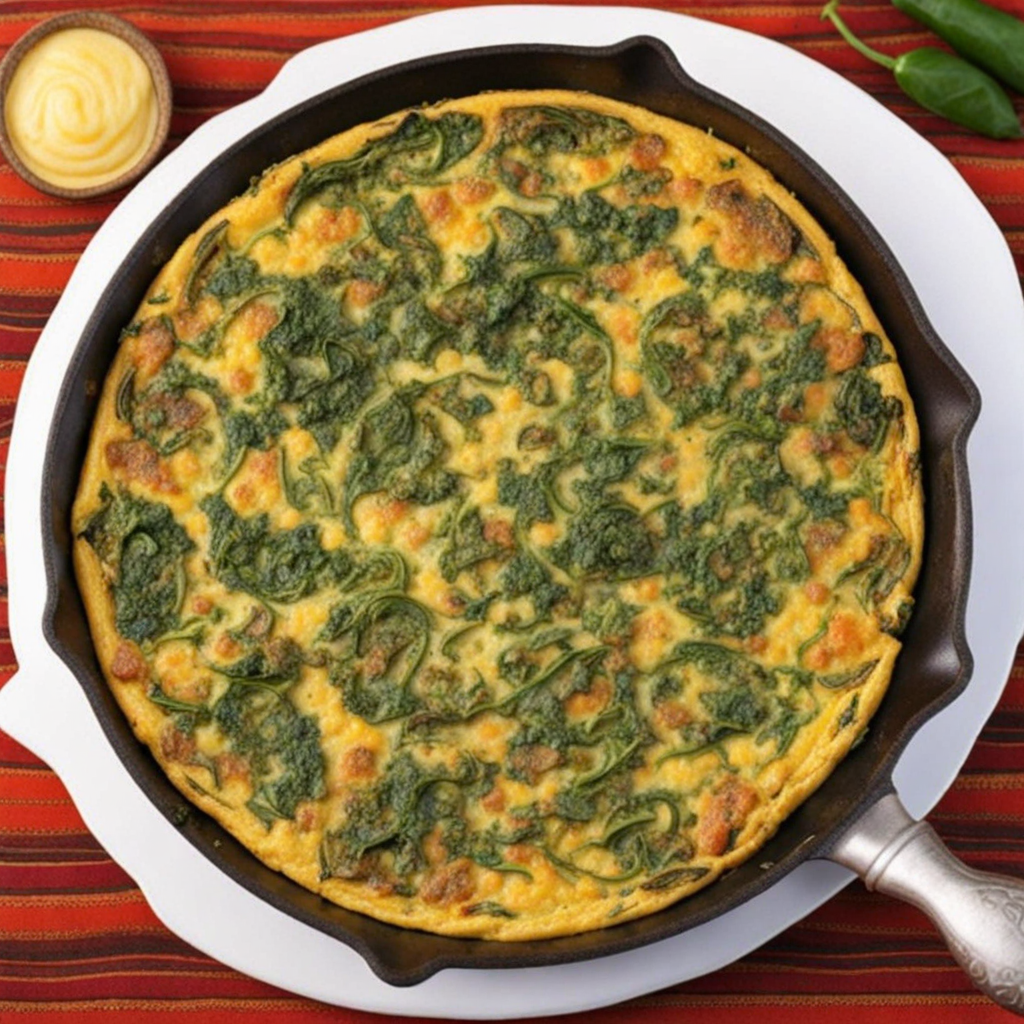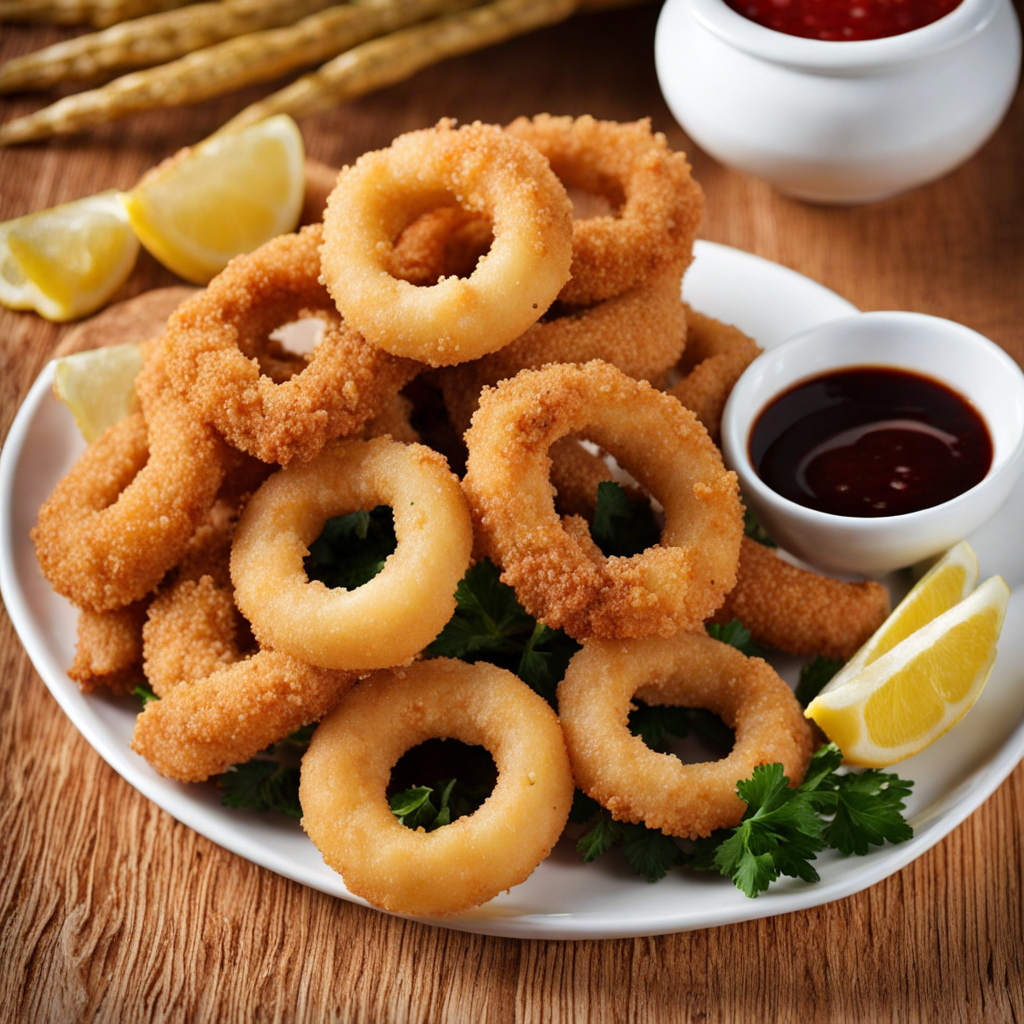Orange Salad with Cinnamon
Orange Salad with Cinnamon is a delightful Moroccan dish that beautifully marries the freshness of citrus with the warm, aromatic spice of cinnamon. The salad typically features juicy, vibrant oranges, which are meticulously peeled and segmented to showcase their bright color and succulent texture. The sweetness of the oranges is enhanced with a sprinkle of sugar, balancing the natural acidity and creating a refreshing base that is both invigorating and satisfying. Often, the dish may also include a drizzle of olive oil, which adds a rich, fruity depth that complements the citrus perfectly. To elevate the flavor profile, ground cinnamon is generously sprinkled over the oranges, infusing the salad with a warm, earthy aroma that harks back to the rich spice traditions of Moroccan cuisine. This unexpected pairing creates a unique taste experience, where the bright, zesty notes of the fruit harmonize with the sweet warmth of cinnamon, offering a delightful contrast that dances on the palate. The salad might also be garnished with a touch of chopped fresh mint, introducing a refreshing herbal note that further enhances its complexity. Served chilled, Orange Salad with Cinnamon is not only visually appealing but also embodies the essence of Moroccan culinary culture, where sweet and savory elements often intertwine. This dish is perfect as a light dessert, a refreshing side, or even a palate cleanser between courses. As you savor each bite, you'll find that this simple yet elegant salad captures the vibrant spirit of Morocco, inviting you to experience a new world of flavors that are both exotic and familiar.
How It Became This Dish
The Story of سلطة البرتقال بالقرفة: Orange and Cinnamon Salad from Morocco Origins سلطة البرتقال بالقرفة, known in English as Orange and Cinnamon Salad, is a delightful dish that captures the essence of Moroccan culinary tradition. Its origins can be traced back to the Moorish influence on North African cuisine, as well as the longstanding agricultural practices in the region. The Moors, who were a mix of Berbers, Arabs, and Africans, brought with them a range of spices, fruits, and culinary techniques that transformed the gastronomic landscape of Morocco. Citrus fruits, particularly oranges, have a long history in Morocco, with cultivation dating back to the 10th century. The ideal climate of the Mediterranean coast facilitated the growth of various citrus varieties, making them a staple in both local diets and in trade. The introduction of cinnamon into Moroccan cuisine can be linked to the spice trade, which saw merchants bringing exotic spices from the East. Cinnamon became a favored ingredient in Moroccan cooking, often used in both sweet and savory dishes to add warmth and complexity. Cultural Significance سلطة البرتقال بالقرفة is more than just a dish; it is a reflection of Moroccan culture and hospitality. The salad typically combines fresh, juicy oranges—often layered with slices of cinnamon and sometimes sprinkled with sugar or garnished with olives and almonds. This combination showcases the Moroccan philosophy of balancing flavors, textures, and colors in food, creating a dish that is both visually stunning and deeply flavorful. In Moroccan culture, food is a vital part of social gatherings and celebrations. Orange and Cinnamon Salad is often served during festive occasions, family gatherings, and traditional Moroccan feasts, known as "meals of love." The bright colors of the oranges symbolize joy and abundance, while cinnamon offers a sense of warmth and comfort, making it a fitting dish for communal dining. It embodies the spirit of sharing, hospitality, and celebration. Development Over Time Over the centuries, سلطة البرتقال بالقرفة has evolved, reflecting both regional variations and changing culinary trends. While the basic components—fresh oranges and cinnamon—have remained constant, the dish has seen adaptations based on local ingredients and seasonal availability. For instance, in coastal regions, the salad may incorporate local nuts, such as almonds or walnuts, adding a crunchy texture that complements the soft, juicy oranges. The dish also serves as a canvas for creativity. In contemporary Moroccan cuisine, chefs and home cooks alike have begun to experiment with additional elements to enhance the flavor profile. Ingredients such as pomegranate seeds, mint, or even a drizzle of orange blossom water may be added, enriching the dish and aligning it with modern tastes. This flexibility has allowed سلطة البرتقال بالقرفة to maintain its relevance in Moroccan cuisine while appealing to diverse palates. The Role of Tradition and Modern Influence As globalization has permeated culinary practices, Moroccan cuisine has witnessed a resurgence of interest both locally and internationally. The traditional recipes, including سلطة البرتقال بالقرفة, have been embraced by a new generation of chefs who seek to honor their heritage while innovating for contemporary tastes. This dual approach—respecting tradition while also welcoming modern influences—has led to a revival of interest in Moroccan gastronomy as a whole. Culinary tourism has played a significant role in this revival. Visitors to Morocco are drawn to its rich flavors and vibrant markets, where oranges and spices fill the stalls. Tourists often seek to learn about traditional Moroccan dishes, and cooking classes have become popular, with many focusing on iconic recipes like سلطة البرتقال بالقرفة. This exchange of knowledge not only preserves the dish's legacy but also introduces it to a wider audience. The Modern Table In modern-day Morocco, سلطة البرتقال بالقرفة can be found in both humble homes and upscale restaurants. It is a staple in the cuisine of the Moroccan diaspora, where it continues to be cherished as a nostalgic reminder of home. The dish often appears on tables during Ramadan, as it offers a refreshing and fragrant option for iftar, the meal that breaks the fast. The combination of sweet oranges and warming cinnamon serves to invigorate the spirit after a day of fasting. With the rise of health consciousness globally, the salad's appeal has expanded due to its nutritious ingredients. Oranges are rich in vitamin C and antioxidants, while cinnamon is celebrated for its potential health benefits, including anti-inflammatory and metabolic properties. As such, سلطة البرتقال بالقرفة is increasingly recognized not only as a delicious dish but also as a wholesome addition to a balanced diet. Conclusion سلطة البرتقال بالقرفة is a dish that embodies the rich tapestry of Moroccan culinary history. Its origins are steeped in the intermingling of cultures and the bounty of the land, while its cultural significance resonates through centuries of tradition and communal gatherings. The evolution of this salad reflects the adaptability of Moroccan cuisine, showcasing how traditional dishes can be reinterpreted and revitalized. As it finds its place in modern culinary contexts, سلطة البرتقال بالقرفة continues to enchant those who encounter it—whether at a bustling Moroccan market, a family gathering, or a fine dining restaurant. It stands as a symbol of Morocco's gastronomic heritage, inviting all to indulge in its vibrant flavors and the warm spirit of Moroccan hospitality. In every bite, one can taste the history, culture, and love that define this beloved dish.
You may like
Discover local flavors from Morocco


